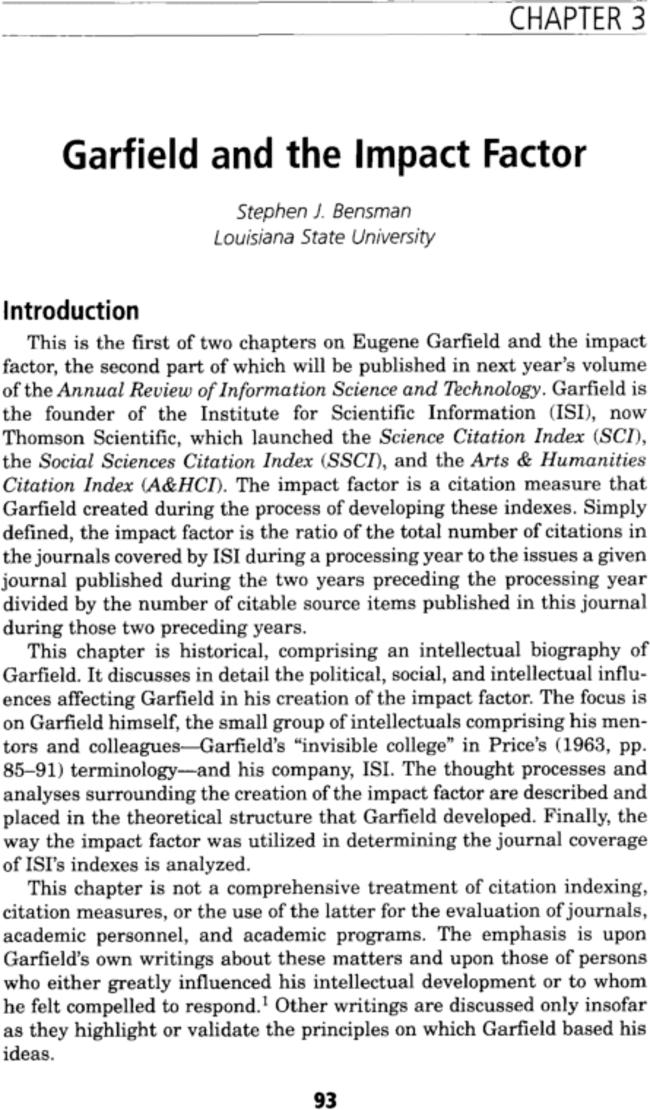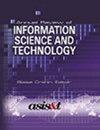Garfield and the impact factor
Annual Review of Information Science and Technology
Pub Date : 2008-10-24
DOI:10.1002/aris.2007.1440410110
引用次数: 1
Abstract
This is the first of two chapters on Eugene Garfield and the impact factor, the second part of which will be published in next year’s volume of the Annual Review of Information Science and Tkchnology. Garfield is the founder of the Institute for Scientific Information (ISI), now Thomson Scientific, which launched the Science Citation Index (SCI), the Social Sciences Citation Index (SSCI), and the Arts & Humanities Citation Index (A&HCI). The impact factor is a citation measure that Garfield created during the process of developing these indexes. Simply defined, the impact factor is the ratio of the total number of citations in the journals covered by IS1 during a processing year to the issues a given journal published during the two years preceding the processing year divided by the number of citable source items published in this journal during those two preceding years. This chapter is historical, comprising an intellectual biography of Garfield. It discusses in detail the political, social, and intellectual influences affecting Garfield in his creation of the impact factor. The focus is on Garfield himself, the small group of intellectuals comprising his mentors and colleagues-Garfield’s “invisible college” in Price’s (1963, pp. 85-91) terminology-and his company, ISI. The thought processes and analyses surrounding the creation of the impact factor are described and placed in the theoretical structure that Garfield developed. Finally, the way the impact factor was utilized in determining the journal coverage of ISI’s indexes is analyzed. This chapter is not a comprehensive treatment of citation indexing, citation measures, or the use of the latter for the evaluation of journals, academic personnel, and academic programs. The emphasis is upon Garfield’s own writings about these matters and upon those of persons who either greatly influenced his intellectual development or to whom he felt compelled to resp0nd.l Other writings are discussed only insofar as they highlight or validate the principles on which Garfield based his ideas.

加菲猫和影响因子
本文章由计算机程序翻译,如有差异,请以英文原文为准。
求助全文
约1分钟内获得全文
求助全文

 求助内容:
求助内容: 应助结果提醒方式:
应助结果提醒方式:


